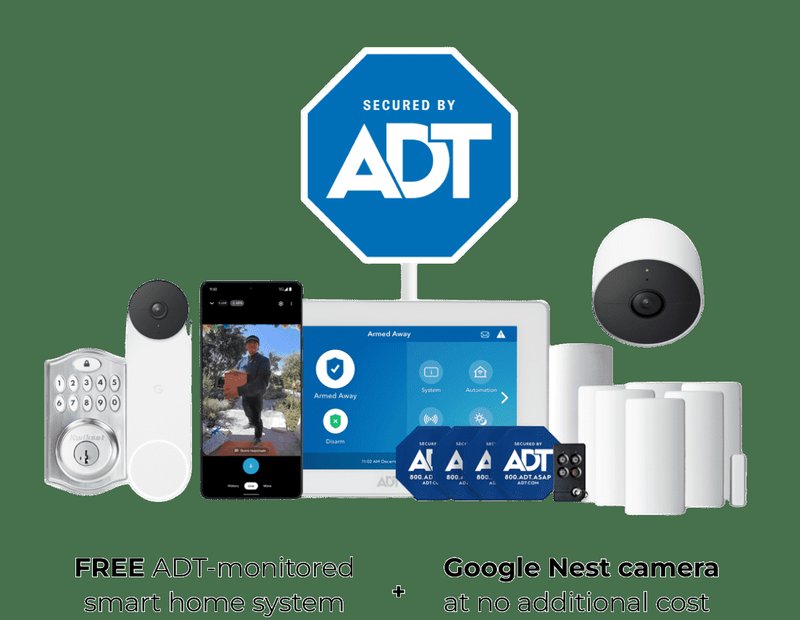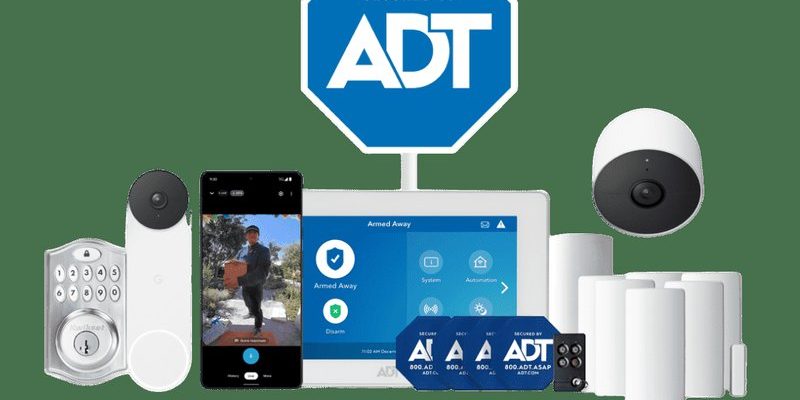
Here’s the thing: warranties sound straightforward, but the steps to actually claim them can be a little less obvious, especially for security systems with remotes, batteries, codes, pairing issues, and all sorts of techy bits. Whether your keypad won’t sync, you’re dealing with a stubborn battery, or something just isn’t working like it used to, knowing how to claim your ADT warranty can save you time, money, and a whole lot of stress.
Let me walk you through the process, slow and steady, so you know exactly what to do the next time your ADT system needs a little backup.
Understanding Your ADT Security System Warranty
First things first: what exactly does your ADT warranty cover? ADT offers a variety of security systems—cameras, sensors, control panels, and handheld remotes—all designed to help protect your home. But not every ADT warranty is created equal, and honestly, the details can get a little confusing if you haven’t read the fine print.
Most ADT home security products come with a *limited warranty*. This usually means ADT will repair or replace equipment that has manufacturing defects or fails during regular use within a certain period. Think of it as a “promise” that your setup is supposed to work as expected, and if it doesn’t, ADT will step in. These warranties don’t always cover things like battery drain (unless it’s abnormal), accidental damage, or problems caused by improper installation, weather, or power surges.
ADT often bundles its warranty with service plans. For example, if you’re leasing your system, major repairs might be covered for as long as your agreement lasts. If you’ve purchased your own ADT equipment, the coverage might be shorter—maybe 90 days to a year, depending on the model. Always check your agreement or the little booklet that came with your device; this is your *warranty bible* when it’s time to claim.
Gathering the Right Information Before You Start
Before you jump in and call customer service, let’s gather your ammo. Filing a warranty claim with ADT will go much smoother if you have all your ducks in a row. You don’t want to be that person frantically digging through drawers while someone is on the line asking for a serial number you haven’t seen in months.
Here’s what you should have ready:
- Your ADT account number: This is key for any troubleshooting or warranty process. You’ll find it on your bill, contract, or online account portal.
- Model and serial number of your system or device: This info is usually printed on the back or bottom of the equipment—look for a sticker marked “SN” or “Serial
- Proof of purchase or installation: ADT might ask for your original receipt, invoice, or install agreement—something that proves the date you got the system.
- Clear description of the issue: Write down exactly what’s wrong. Is the code not pairing? Did you try to reset but nothing worked? Is a battery failing way earlier than expected?
- A timeline of events: If you’ve already tried troubleshooting steps (like resetting, syncing remotes, or replacing batteries), note what you did and when.
You might be wondering why so much detail is necessary. Here’s why: it speeds up the process and avoids the dreaded “we need more information—please call back” run-around that can drive anyone up the wall.
Step-by-Step: How To File an ADT Warranty Claim
Let’s get into the nitty-gritty. Filing a warranty claim isn’t rocket science, but ADT does have its own process. Here’s how you can get from “broken” to “back in business” without losing your cool.
- Contact ADT Support: The simplest way is to call the ADT customer care number (found on their website or your contract). You can also log in to your online ADT account and use their support chat or submit a warranty request ticket.
- Explain the Issue: Be as detailed as possible. “My remote won’t pair with my panel” is better than just “It doesn’t work.” Mention if you’ve already tried resetting, changing batteries, or syncing the code.
- Follow Troubleshooting Steps: ADT reps might walk you through some basic troubleshooting on the spot—like resetting your system, checking battery connections, or attempting to re-sync your devices. Don’t be annoyed—they have to make sure it’s really a malfunction and not something easy to fix.
- Verification and Scheduling: If your issue qualifies for a warranty claim, ADT may schedule a technician visit or mail you a replacement part. They’ll ask you to provide your serial number and proof of purchase.
- Confirmation and Follow-Up: Once the claim is confirmed, keep any reference numbers or emails. These help you track the repair or replacement in case things get delayed.
Here’s a little tip: jot down the name of the support person and the time you called. If you need to follow up, this info can make you sound like a pro and keeps your claim moving.
Troubleshooting First: What To Try Before Filing
You know that feeling when you finally get through to support, only for them to ask you to do a bunch of things you’ve already tried? Let me help you avoid that. There are a few common issues with ADT systems—like the remote not pairing, code errors, or stubborn batteries—that you can check yourself first.
Try these before making your claim:
- Reset the Security System: Sometimes, a simple reset (unplugging the panel or pressing a reset button) fixes glitches faster than you’d think.
- Replace or Re-seat Batteries: Weak or dead batteries are the secret culprit for lots of issues. Pop in fresh ones—make sure they’re oriented correctly.
- Resync or Pair Your Remote: If your remote or keypad won’t communicate, try pairing it again using the instructions in your manual or ADT’s website. Sometimes it’s just a matter of pressing the right buttons in the correct order.
- Double-Check Codes: If you’re entering a code and getting errors, make sure it’s the correct sequence. If you’ve recently changed passwords or codes, update every device that connects to your system.
If nothing works, then it’s time to move forward with your warranty claim, armed with all the steps you’ve tried. Reps love knowing you’ve already covered the basics—it speeds things up and shows you’re not just calling for every little blip.
What’s Covered—And What Isn’t?
Here’s where things can get a bit tricky, honestly. Not every blip or beep is covered by the ADT warranty, and knowing the difference can save you from disappointment. Most plans cover only manufacturer defects and normal use failures—not mishaps, power surges, or issues caused by pets having a little too much fun.
Typical coverage includes:
- Defective hardware: This means the equipment stops working due to something that went wrong at the factory.
- Malfunctions during regular use: If your system fails without warning, and it’s not due to outside damage.
- Electrical or software problems: If the panel won’t sync or keeps throwing code errors, and troubleshooting hasn’t helped.
Usually not covered:
- Cosmetic damage: Scratches, dents, or fading from the sun aren’t a warranty issue (just a life thing).
- Accidental breakage: Like if your kid hurls the remote across the room—sorry, that’s on you.
- Batteries (after the first few months): These are usually considered wear-and-tear items.
- Damage from poor installation or misuse: If you tried to code-hack or rig a reset and it bricked the system, you’re probably out of luck.
If you’re unsure, it never hurts to ask. Sometimes, a support agent can make a judgment call or offer a low-cost repair even if you’re out of warranty.
ADT’s Replacement vs. Repair Policy
This might surprise you, but not all warranty claims end with a shiny new gadget arriving at your door. Here’s how ADT usually handles claims, so you know what to expect.
If it’s a small part (like a remote, keypad, or battery compartment):
- ADT may mail you a replacement, along with instructions for how to sync, pair, or install it yourself.
- You might need to send the old part back. Keep the packaging just in case.
If it’s a bigger issue (main panel, whole security unit):
- ADT will probably send a technician to your home. They’ll bring tools, reset codes, and handle the repair or replacement on site.
- If your warranty covers labor, this visit should be free or low-cost—confirm when you schedule.
*Pro tip*: If you’re offered a replacement but would rather DIY, always check if you’re comfortable with pairing or syncing new gear yourself. Some remotes or panels require a specific code to pair up correctly, and it’s worth asking for step-by-step instructions.
Claim Timeline: How Long Does It Take?
You might wonder, “How fast can I get this all sorted?” The answer depends on a few things: what’s broken, where you live, and how fast you and ADT can trade info.
- Phone claims: Usually take 15–30 minutes (depending on hold times and the complexity of your issue).
- Mailing a replacement: Most parts arrive in 3–5 business days, though rural areas may take longer.
- Technician visits: Scheduling can take a day to a few weeks (especially during busy seasons).
- Special order items: If your model is older or discontinued, it might take longer—ADT will let you know if there are any delays.
Make sure you’re reachable by phone or email while your claim is open. A missed call can mean an extra day (or three) before your system gets back up and running.
Alternatives If You’re Out of Warranty
Found out your warranty expired last week? It happens. But don’t worry—you’re not out of options. You might be able to fix the system yourself, order universal replacement parts, or pay a small fee for an ADT tech to repair it.
- ADT Service Plans: Some plans let you extend coverage or add repair services for a monthly fee, which can be worth it for peace of mind.
- Universal Remotes or Parts: For things like batteries or remotes, a universal replacement might work, though you’ll need to pair and sync it yourself. Double-check compatibility online.
- DIY Troubleshooting: Resetting, code updates, or firmware installs might restore your system, especially if the issue is software-based.
- Third-Party Repair Services: If you’re handy, some local tech shops offer repairs for out-of-warranty alarm panels and remotes.
Just keep in mind: only official ADT parts and repairs guarantee full compatibility and don’t void any remaining coverage.
Closing Thoughts: Making the Most of Your ADT Warranty
At the end of the day, a security system is like a trusty guard dog—you want it alert, responsive, and ready when you need it. And the ADT warranty? Think of it as your “safety net” for when things go sideways. Knowing how to claim it—what to say, which info to gather, what to expect—keeps you in control, not scrambling around when something breaks.
So, the next time your code won’t sync, your battery fizzles out, or your remote just won’t play nice, you’ll know exactly how to claim your ADT security system warranty. Take your time, stay organized, and don’t be afraid to ask lots of questions along the way. Your peace of mind—and your home—deserves nothing less.
